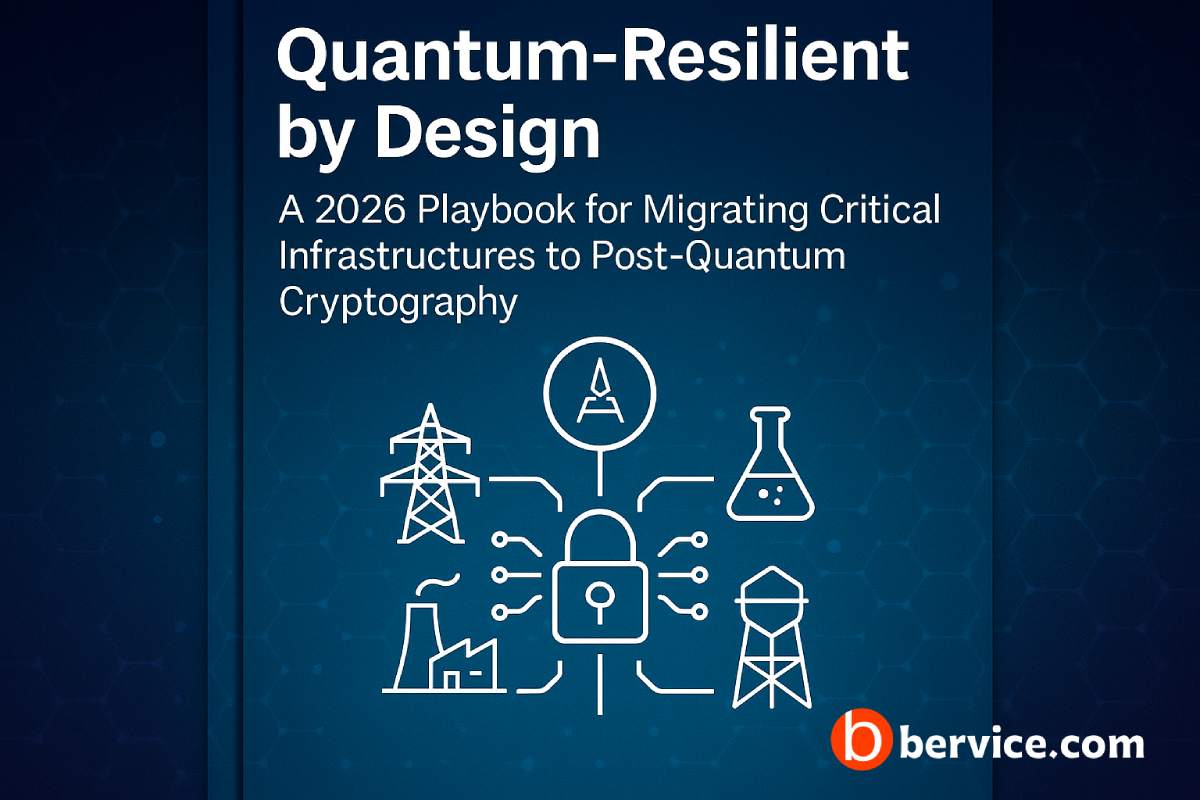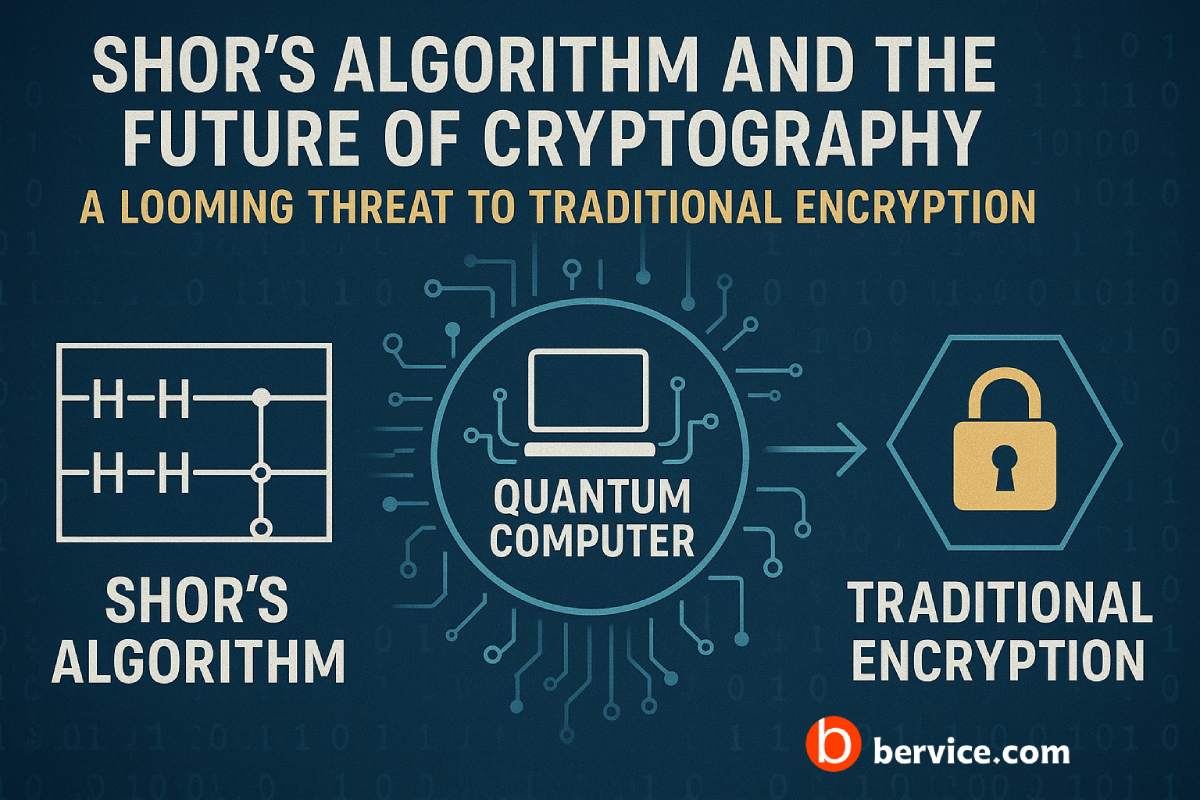
Executive Summary
2026 is the year to move decisively from “planning” to “pilot-at-scale” on post-quantum cryptography (PQC). Core building blocks are ready: NIST finalized the first PQC standards—FIPS 203 (ML-KEM / Kyber), FIPS 204 (ML-DSA / Dilithium), and FIPS 205 (SLH-DSA / SPHINCS+) in August 2024, and selected HQC in March 2025 for an additional KEM track. Governments have published concrete migration directives (e.g., U.S. OMB M-23-02; NSA CNSA 2.0 with enforcement ramps through 2030). Europe has coordinated roadmaps for Member States. These signals translate into a clear 2026 mandate: inventory cryptography, enable crypto-agility, deploy hybrid key exchange and PQ signatures where mature, and harden PKI and code-signing first—while building operational muscle to rotate algorithms again if needed.
Why 2026 Matters
- Harvest-now, decrypt-later (HNDL) risk is present today. Data with long confidentiality lifetimes (health, financial, national security, IP) is being exfiltrated now to be decrypted once large quantum computers arrive.
- Standards are sufficiently stable to implement. With FIPS 203/204/205 published and HQC selected, security architects can proceed with vetted primitives and reference profiles; further guidance continues to refine hybridization and key-derivation practices.
- Regulatory momentum is real. OMB M-23-02 mandates cryptographic inventory and transition planning for U.S. federal systems; NSA CNSA 2.0 sets staged dates through 2030, prioritizing code-signing now; the EU has a coordinated PQC transition roadmap.
Guiding Principles for a Safe PQC Migration
- Crypto-agility first. Engineer the ability to swap algorithms, parameters, and certificates without app rewrites.
- Hybridize during the transition. Use hybrid KEM (classical + PQC, e.g., X25519 + ML-KEM) and dual signatures where feasible to preserve interoperability and hedge residual risk; align with evolving NIST/IETF guidance on hybrid shared secret construction and KDFs.
- Prioritize high-value data paths. Protect long-lived confidentiality first (backups, archives, inter-DC links, key escrow, HSM-to-HSM, sensitive API traffic).
- PKI and code-signing early. Signing is central to supply-chain trust; NSA emphasizes immediate transition steps for software/firmware signing.
- Measure, don’t guess. Validate performance and failure modes in production-like pilots, as encouraged by OMB.
The 2026 Roadmap (Four Workstreams, Twelve Months)
Workstream A — Governance & Risk (Months 0–3, then ongoing)
- Stand up a PQC Program Office reporting to the CISO/CTO with procurement, legal, and risk officers.
- Adopt policies aligning to NIST PQC and CNSA 2.0. Map system criticality and data lifetime to migration urgency (e.g., ≥10-year confidentiality ⇒ top priority).
- Vendor obligations. Update contracts to require FIPS 203/204/205 support, hybrid mode options, and clear rotation paths.
Artifacts: Program Charter; Enterprise Cryptographic Policy; Vendor Addenda.
Workstream B — Discovery & Architecture (Months 0–4)
- Cryptographic inventory (automated where possible). Enumerate protocols (TLS, IPSec, SSH), libraries, certificate stores, HSMs, firmware, and embedded endpoints; tag by business service and data classification per OMB guidance.
- Design crypto-agile abstraction. Introduce a cryptography provider interface (CPI) layer so apps call logical primitives (“kem.encapsulate”, “sign.detached”) decoupled from specific algorithms.
- Select target primitives.
- Key exchange / KEM: ML-KEM (Kyber) as primary; evaluate HQC as it standardizes.
- Signatures: ML-DSA (Dilithium) for general use; SLH-DSA (SPHINCS+) for stateless hash-based fallback; consider FALCON for constrained, where available and approved.
- KDF / hybrid formatting: Follow NIST SP 800-56 series updates and IETF hybrids.
Artifacts: Cryptographic SBOM; Reference Crypto Profiles; Hybrid Handshake Blueprint.
Workstream C — Build & Pilot (Months 3–9)
- Network security pilots (core first):
- TLS 1.3 with hybrid KEM ciphersuites on internal service meshes, load balancers, and data-plane proxies.
- IPSec/GRE/MPLS tunnels between data centers with hybrid KEM.
- SSH jump hosts with PQ signatures for host keys and user certs.
- PKI modernization:
- Stand up PQC-capable CA hierarchy; support composite/alternate chains (classical + PQC).
- Issue dual-algorithm code-signing certs; integrate build pipelines and package managers to verify PQ signatures. Prioritize firmware and boot chains per CNSA 2.0.
- Data-at-rest and backups:
- Protect keys (KEKs/DEKs) with hybrid KEM; re-wrap vault keys; ensure archive confidentiality lifetimes match risk.
- HSMs and secure enclaves:
- Qualify HSM firmware that implements ML-KEM/ML-DSA and composite cert flows; ensure throughput and latency meet SLOs.
- Performance and resilience testing:
- Benchmark handshake latency, handshake failure rates, and CA issuance throughput.
- Chaos drills for certificate rollbacks and algorithm swaps.
Artifacts: Pilot Runbooks; Benchmark Reports; PQC-Ready PKI and CI/CD integrations.
Workstream D — Scale & Operate (Months 9–12)
- Gradual cutover: Roll PQ profiles across tiers (external APIs, partner links, edge/CDN) with negotiated fallback to classical until partners catch up.
- Monitoring & detection: Extend observability to track cipher use, cert chain composition, and downgrade attempts.
- Incident response for PQC: Add playbooks for composite chain failures, library CVEs, and mis-issuance of PQC certs.
- Training: Upskill ops teams and third-party integrators; publish developer guidelines and secure coding patterns.
Artifacts: PQC Operations Handbook; Partner Interop Guides; Updated IR Playbooks.
Technical Deep Dive: Where to Start for Maximum Risk Reduction
- Code-Signing & Supply Chain
- Move build pipelines (containers, packages, app stores, firmware) to ML-DSA or composite signing; enforce verification in deployment gates. This is explicitly prioritized by CNSA 2.0 timelines.
- Long-Lived Confidentiality Links
- Encrypt inter-data-center replication, key escrow, and archival transfers with hybrid KEM (e.g., ML-KEM + X25519) to neutralize HNDL risk now, while preserving classical interop. Follow NIST/IETF guidance on hybrid shared secret derivation.
- PKI & Identity
- Introduce composite or parallel chains: a classical chain and a PQ chain for the same subject. Roll out PQC-capable OCSP/CRL and consider shorter lifetimes to reduce blast radius.
- Protocols and Stacks
- Target TLS 1.3, QUIC, IPSec, SSH, S/MIME and X.509 first; ensure libraries expose crypto-agile APIs and support FIPS-validated PQ implementations as they become available.
- Governance & Compliance
- Align deliverables with OMB M-23-02 milestones, NIST SPs/IRs (e.g., migration guidance and KDF practices), and the EU Coordinated Implementation Roadmap to ease audits and cross-border operations.
Procurement Checklist for 2026 Contracts
- Standards: Must support FIPS 203/204/205; roadmap for HQC and future KEMs.
- Hybrid capability: Negotiated hybrid ciphersuites and composite certificates.
- Validation & FIPS mode: Vendor plan for FIPS 140-3 modules with PQ primitives.
- Crypto-agility: Configurable algorithm suites and parameter rotation without downtime.
- Performance: Benchmarks on your traffic profile; evidence of interop with popular stacks.
- Lifecycle: Automated renewal/rotation; incident rollback; SBOMs that include cryptographic dependencies.
Measuring Success
- Coverage: % of priority systems using PQ or hybrid for data in transit; % of code artifacts signed with PQ signatures.
- Resilience: Time to swap algorithms; mean time to recover from certificate failure.
- Interop: Partner adoption rate; downgrade-attack detection rates.
- Compliance: Alignment with OMB/CNSA/EU milestones; audit outcomes.
Common Pitfalls (and How to Avoid Them)
- Treating PQC as a single cutover. Instead, stage by asset class and keep crypto-agility for future rotations.
- Ignoring performance headroom. PQ signatures and KEMs change handshake sizes and CPU costs; benchmark early.
- Neglecting supply-chain trust. If your binaries and firmware aren’t PQ-signed, attackers can still win upstream.
- Waiting for perfect clarity. Standards are stable enough—pilot now, guided by current NIST and IETF notes.
A 90-Day Starter Plan (What to do first)
- Name an executive-backed PQC Program Lead and publish an enterprise cryptographic policy.
- Kick off the cryptographic inventory (tools + questionnaires) per OMB practice.
- Stand up a PQC-capable internal CA and issue test composite/alternate chains.
- Enable hybrid TLS in one production-like environment; measure latency, failure, and throughput.
- Convert one critical code-signing path (e.g., firmware) to ML-DSA or composite, with verifier enforcement.
Looking Ahead (2027–2030)
Expect broader FIPS 140-3 validations, richer IETF profiles, vendor maturity across HSMs, and sector-specific baselines. NSA CNSA 2.0 expects transitions to complete by 2030, with interim enforcement points—so momentum in 2026–2027 is essential. The organizations that invest in crypto-agility and disciplined operations now will absorb future algorithm changes with minimal disruption.
Key References
- NIST final PQC standards (FIPS 203/204/205) and project status (incl. HQC selection).
- U.S. OMB M-23-02 (PQC migration memo).
- NSA CNSA 2.0 timelines and emphasis on software/firmware signing.
- EU Coordinated Implementation Roadmap for PQC transition.
- NIST proposals and notes for hybrid KEM/KDF and migration technicalities; IETF PQC migration draft.
Bottom line: 2026 is the year to operationalize. Start with crypto-agility, hybridize critical paths, modernize PKI and code-signing, and scale through disciplined pilots. With standards and policy anchors now in place, waiting only increases your exposure to harvest-now, decrypt-later threats.
Connect with us : https://linktr.ee/bervice




